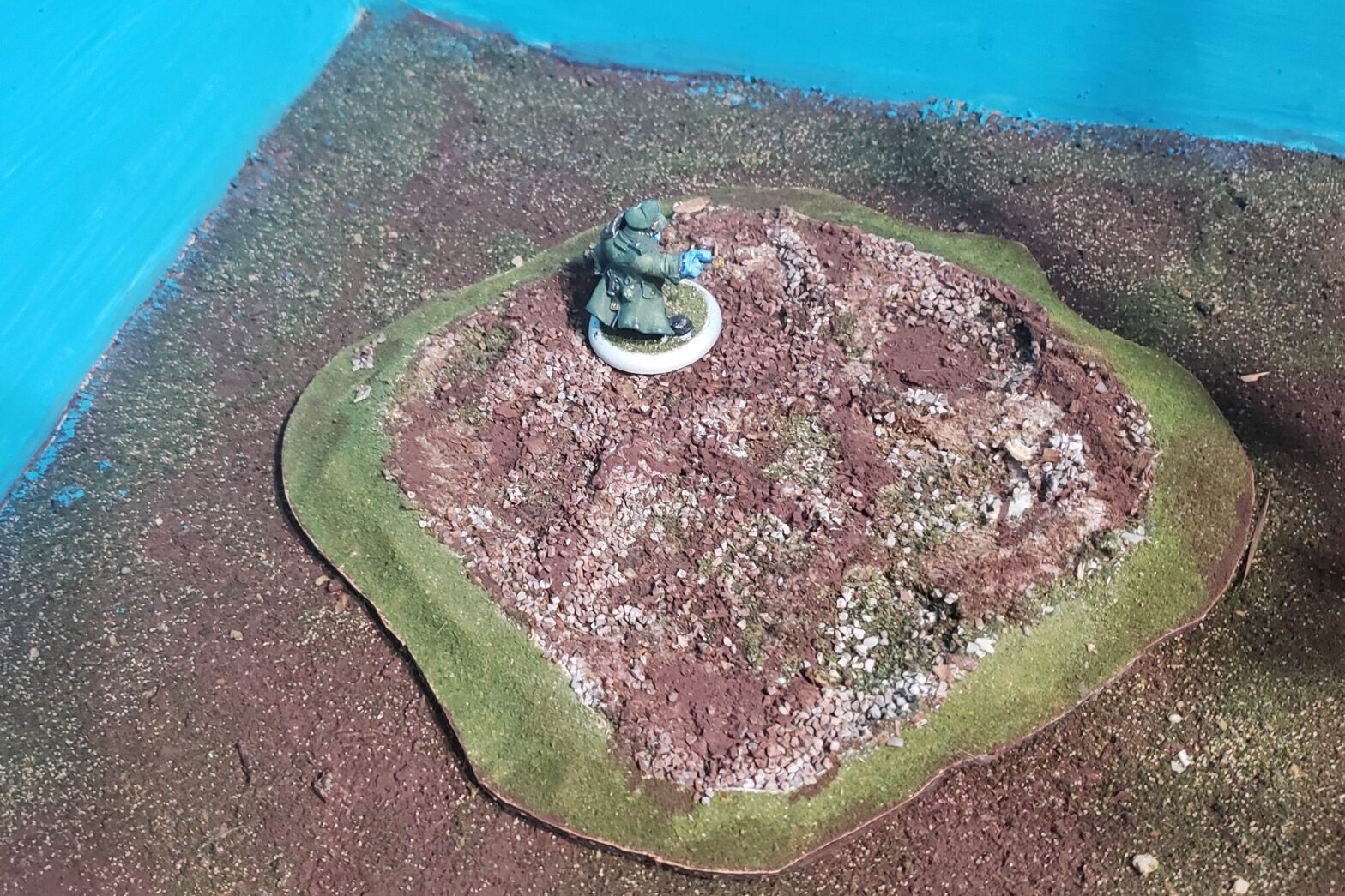Where did all the hills go?
A few years ago, Privateer Press eliminated hills and elevation rules from the Warmachine/Hordes game. Elevation used to provide a defense bonus against ranged attacks (because of high ground), and offered easier to draw line of sight to and from models on the elevated surface. Hills were an elevated surface that was one inch tall.
I have a significant number of hills in my terrain collection, because they were easy to construct, fun to make, and I tried as best as I could to make the slope gradual enough to keep models from falling over. Now, with hills being removed from the game, I have a number of unusable terrain pieces.
What do you do when the hills leave the game?
You could store them until the rules change again. You could play a different game where elevation matters (Warcaster?), or throw them away. Or, you could make new terrain from the old. In this article, I’m making craters, and will follow up next week with quicksand.
Making Craters out of Molehills
Most of my hills have a rubberized base, foam structure, and vinyl flocking secured with hot glue. Disassembly is simple as cutting into the hill’s vinyl and pulling it away from the foam.
Next, it’s a matter of scraping the foam out of the crater edge. A hobby knife provides a sharp instrument to slash and hack the foam. An uneven look, with circular patterns gives the illusion of a heavily cratered area. In this example, the foam pulled right off the rubberized bottom, so bits of foam needed gluing inside the main crater to provide that multiple bombardment look.
I made a mistake and used PVA here. It’s not going to hurt the model, but drying time means walking away from the project for a while.
Next step, pouring your flocking of choice. I chose to play with a mix of course and fine ballast, to resemble the rocky flotsam left by a high powered blast.
Finally, paints, washes and sealant finish up the crater.
Personal Critique
Some negative comments on my own work: The green band could be blended better with the overall piece. I could also better define the craters inside, using a hole saw, like the one pictured below:

Some positives:
- It’s a good reuse of material, although I don’t know what to do with the vinyl flocking. Maybe make forests? Possibly, but the vinyl looks more like open grass.
- I think I have the muddy paint look figured out. The bulk craft paint seems to work well with terrain, so that was a good choice.
- I might get some flack from people wondering why I chose the coarse ballast. However, what I have personally observed in real life craters leads me to believe that most blast craters will have small rock fragments like that surrounding and inside them if the blasting is in a rocky area, like I imagine most of the Iron Kingdoms to be. I might go ahead and so some that are similar to some cratering I’ve seen in the mud flats. That could be fun.
Future Plans
I’ll revisit craters again, in the future. In the near term, I plan on working a hill into a new terrain type: Quicksand.
After the quicksand, I have a desire to revisit some forest basing. I also plan on doing a standard pond to replace the one that warped during my move, and an acid tub to replace some of the acid pits I gave away. I’m excited more about the acid tub, but want to test some things on the regular water feature before trying something that might end up in the scrap bin if things go wrong.
On the battle report/game front, I haven’t played much this summer due to ongoing Covid, and the strain it’s putting on my already precarious work-home balance. Here’s to hoping that 2022 is a better year.












